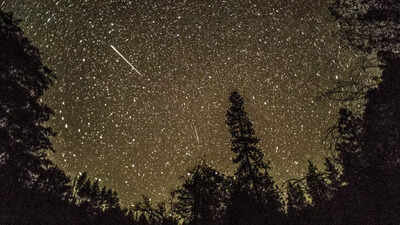Perseids Meteor Shower 2025: When, where, and how to watch the show |

Somewhere between late-night scrolling and the chaos of everyday life, we forget to look up. But this August, the universe is putting on a show, and all you have to do is lie back and watch.The Perseid meteor shower, one of the most dazzling celestial events of the year, is back. The meteor is a yearly visitor, showing up in August as Earth passes through the dust trail of Comet Swift-Tuttle, a massive object that loops past our planet once every 133 years. That trail becomes our playground of shooting stars, year after year. In 2028, scientists expect the Perseids to evolve into something even more jaw-dropping: a meteor storm.
When to watch the Perseids
Timing is everything, and with the Perseids, the show builds toward a grand finale. This year, the peak is expected overnight on August 12, continuing into the early morning hours of August 13.

According to Space.com, the real magic begins around 11 p.m. local time on August 12, when the frequency of visible meteors starts to ramp up. The most active window runs through dawn on August 13, when you could see up to 100 meteors per hour streaking across the sky.Though the Perseids can be seen from mid-July to late August, this overnight window offers the most reliable spectacle, no special effects, just comet dust burning up in our atmosphere in flashes of light that travel over 133,000 miles per hour.Yes, you read that right. Most of these meteors are no bigger than a grain of sand, but when they hit Earth’s atmosphere, they put on a fiery light show that rivals fireworks.
How to watch it best
The beauty of the Perseids is that you don’t need fancy gear. Binoculars and telescopes will narrow your view, so ditch the tools and trust your eyes. But there are a few things that can help turn your viewing into a memorable experience:

Head somewhere away from city lights. The less light pollution, the better.Give yourself at least 30 minutes in the dark before you start judging the show. No peeking at your phone, it’ll ruin your night vision.The meteors will appear to radiate from the Perseus constellation, which follows the more familiar Cassiopeia in the night sky. Not a stargazer? No worries. Just keep your eyes on the widest patch of sky you can find; the streaks will come to you.





